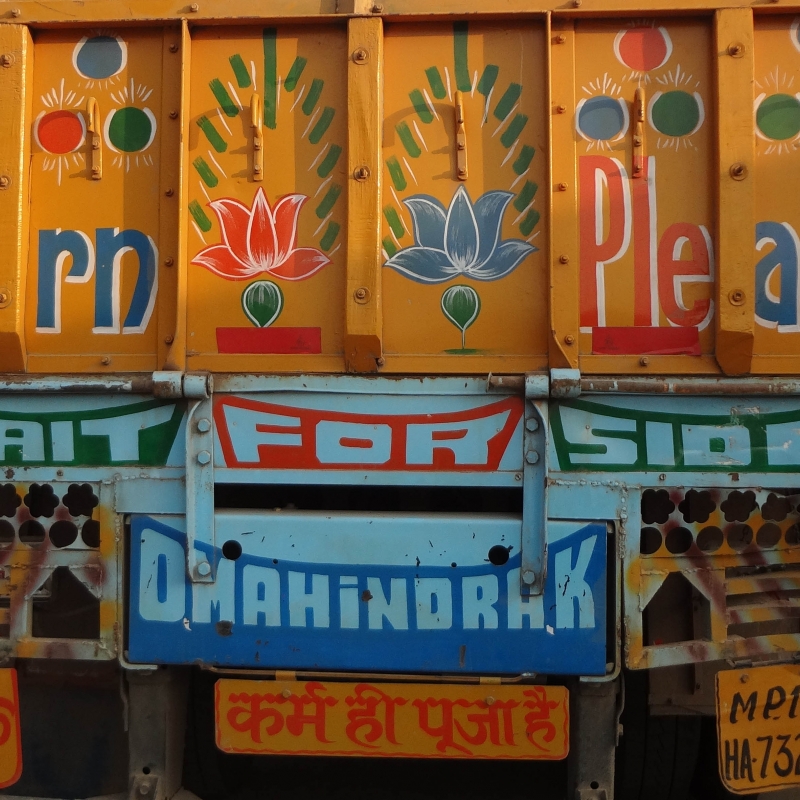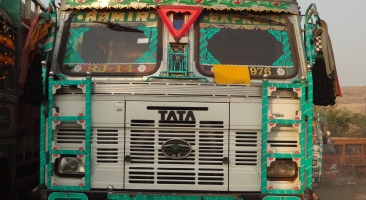Trucks are universally understood as means of freight transportation, but in India as in South Asia, they serve as sites for literary production as their bodies are decorated with poetic expressions. Those expressions often represent the truck driver’s worldview, as they deal with the ideas of home, belonging, identity, loneliness and journey, among others. The expressions are meant for humour, but they also carry the messages of everyday philosophy. Mostly comprised of one- to -four-line shayaris (poems), these expressions serve as documentation of contemporary politics and society.
Truck literature can be categorised as an alternative literary genre that challenges canonical concepts of South Asian literature. Carried on the bodies of trucks, it takes literature beyond the monopoly of printed texts and highbrow literary spaces.
Truck literature is unabashed in its embrace of sentimentality; oftentimes, it also serves a clear utilitarian purpose. Its audience, thus, is also different from the conventional readers of literature. Who are these readers and what messages do they receive from these poems in motion?


